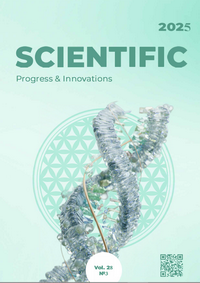Seed productivity of promising soybean samples according to economic indicators under stressful conditions of the Forest-Steppe zone of Ukraine
DOI:
https://doi.org/10.31210/spi2025.28.03.10Keywords:
soybean, variety, breeding line, economic value, difference, yield, quality, weatherAbstract
Soybean (Glycine max (L.) Merrill) is a strategic crop with high grain yield potential and high protein and oil content. Its grain is in high demand both in Ukraine and worldwide. The main factors determining the yield of this crop are the characteristics of the variety, soil and climate conditions, and cultivation technology. In the context of climate change, with declining rainfall and intensifying droughts, the role of variety selection as an effective means of increasing yield is growing. The article presents the results of a study of the economic suitability of promising breeding lines and varieties of cultivated soybean, which were created and studied at Poltava State Agrarian University. The newly developed breeding material undergoes a comprehensive evaluation and is used to develop soybean varieties for various uses. The created varieties (Morion, Serdolik, and Citrin) are distinguished by the lack of pubescence on all plant parts. Such soybean varieties are not included in the State Register of Plant Varieties Suitable for Distribution in Ukraine. Our research aimed to determine the level of valuable economic indicators of the newly created varieties and breeding lines. Field studies were conducted (2022–2024) at the Gryga Farm (Poltava region). The soil was podzolized chernozem. The predecessor was winter wheat. The object of the research was new varieties and promising lines. The varieties had a growing season of 99–100 days. Over three years of competitive variety testing, the Serdolik variety had the highest weight of 1,000 seeds at 225 g, while the Morion and Citrin varieties weighed 179 and 160 g, respectively. The protein content in the seeds was significantly higher in the Serdolik and Citrin varieties – 44%. In the Morion variety, this indicator was 42 %, which is higher than its average value in the experiment. In terms of fat content, all three non-pubescent varieties were inferior to the Anthracite variety (24 %) and contained 21 %. It was established that the seed yield of the Morion, Serdolik, and Citrin varieties was quite high (3.6–3.8 t/ha). The yield of marketable seeds in all non-pubescent varieties was higher than in the Anthracite standard and ranged from 79 to 82 %. In 2024, the Morion, Serdolik, and Citrin varieties were submitted for state qualification examination to obtain plant breeders’ rights.
Downloads
Published
How to Cite
Issue
Section
License
Copyright (c) 2025 Scientific Progress & Innovations

This work is licensed under a Creative Commons Attribution 4.0 International License.

 Creative Commons Attribution 4.0 International Licens
Creative Commons Attribution 4.0 International Licens